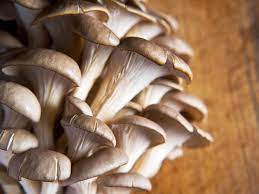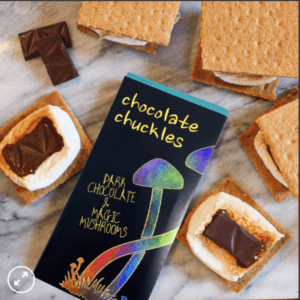Ultimate Guide To Identifying Lliberty cap mushrooms
liberty cap mushrooms grow wild in the UK in late summer until it gets frosty around November.
The little psychedelic mushrooms spring up in pastures, fields and parks all over the country.
As they contain the psychedelic compound psilocybin, liberty caps are illegal to possess in the UK.
So, to make sure you don’t accidentally pick and consume liberty caps, you better brush up on your skills to identify them 😉
This comprehensive guide to identifying liberty caps will help you…
What are Liberty Caps?
Scientifically known as psilocybe semilanceata, liberty cap mushrooms, or simply ‘libs’, are the most well-known and common magic mushroom found in the UK – and many other countries.
They are responsible for the first documented psychedelic trip in England, when, in 1799, a family ate some libs they had picked in London’s St. James’s Green Park. An account of their experience is published in the London Medical and Physical Journal and can be read here.
liberty cap mushrooms contain the compound psilocybin, which is responsible for the psychedelic, or “magic”, effects of the mushroom. Psilocybin and psilocybin mushrooms are a controlled substance in the UK.
Mushrooms themselves, including liberty caps, are the fruiting body, or reproductive organ, of a fungal organism that is mostly underground. Mushrooms grow from mycelium, which is a network-like fungal mass that lives in soil.
How strong are lliberty cap mushrooms?
Although small, liberty caps pack a psychedelic punch. In fact, by percentage of dry weight, they are more potent than psilocybe cubensis, which is one of the most commonly cultivated magic mushrooms.
A number of tests on the potency of liberty caps have given varied results. Generally, however, it’s thought that they contain between 0.5-2.5% psilocybin by dry weight, with an average of 1%.
While quite potent, as they are quite small – and shrink even further when dried – you need to pick a lot if you want to have a full dose (2-3.5g dried).
Identifying liberty cap mushrooms
Liberty cap mushrooms look like a little hat on a stick. They are small, growing to a height of around 5-10cm. If it’s smaller or bigger than this, it’s probably not a liberty cap.

It’s cap, or hat, is between 0.5cm to about 2.5cm in diameter. Generally, the cap is about as big a thumbnail.
Colour
liberty cap mushrooms come in two colours. They start off a dark caramel colour. The surface is a bit shiny or oily as well as translucent, so you can see the vertical lines of the gills through the cap.
As the sun dries the cap, it transforms from the top and spreads downwards, becoming opaque and cream coloured. The gills are no longer visible except round the rim of the cap where dark gills can just be seen.
The caps can darken again as it gets old, soggy and mushy.
When liberty caps are moist, it’s possible to peel a very thin transparent jelly skin. This is not a common feature of mushrooms, so makes a good identifier of libs.
Cap shape
The cap shape of liberty caps is pretty distinctive, but can also vary somewhat. They generally have a pointy bell shape, which is taller than it is wide, with the bottom edge, or the ‘margin’, tucked in slightly.
Some can be slightly wider than they are tall, but will still have some height to them. If a cap is more like an umbrella than a cone, it’s not a liberty cap.
The nipple
The best known feature of the liberty caps is the nipple on the top. While the nipple on top can be a good indicator of a lib, other species (including poisonous ones) also have a similar nipple-like peak, so don’t rely solely on this feature to identify liberty caps.
Often, the nipple on liberty caps can be a different colour to the rest of the cap.
Remember, you can’t identify liberty caps on any one feature. You must consider all of the features together.
The stem
liberty cap mushrooms stems have a wonkiness to them. They are less like straight sticks and more like wiggle strings. Although they are wiggly, they do not easily collapse and feel solid.
The stem surface is smooth, but look closely and you can see silky, twisted fibres that make up the stem.
They are equally thick all the way down, but get a tad thicker at their base where they connect with their mycelium (the underground part of a fungal organism).
When young, the stems are light coloured and slowly turn more yellowy-brown as they age. They also darken when picked and handled. They won’t bruise blue, like other ‘magic’ mushrooms containing psilocybin.
The gills and spores
The gills of mature liberty caps are dark due to the purple-black spores they are producing.
Where to find liberty caps
You shouldn’t have to go far to find some liberty caps in the UK. Local parks, common recreational areas, race tracks, woodland and country paths are all potential growing spots.

They generally appear alone or in small clusters on rich soil in pastures, meadows and parkland. They don’t grow on cow or sheep dung, but are common in areas where livestock may roam.
In fact, they are often found in London’s Hyde Park, Primrose Hill and Richmond Park.
You’ll maximise your luck by going out the day after a night of light rain. You may even want to check the same locations more than once as mushrooms can spring up overnight.
Dry weather and cold are not conducive to hunting mushrooms. If it’s uncharacteristically hot or there’s frost on the ground, don’t bother.
Are liberty cap mushrooms legal in the UK?
Any fungus that contains psilocin or psilocybin is controlled in the UK. Therefore, liberty caps are illegal in the UK and their cultivation, possession or sale is controlled under the Misuse of Drugs Act 1971.
liberty cap mushrooms are classed as Class A drugs in the UK, meaning the most severe punishment for possession is up to seven years and an unlimited fine. However, a sentence this harsh is extremely unlikely.
In fact, if you were caught with a small amount for personal use – say up to 5 grams – you’d probably get away with a caution.
